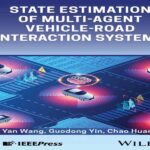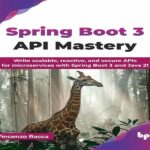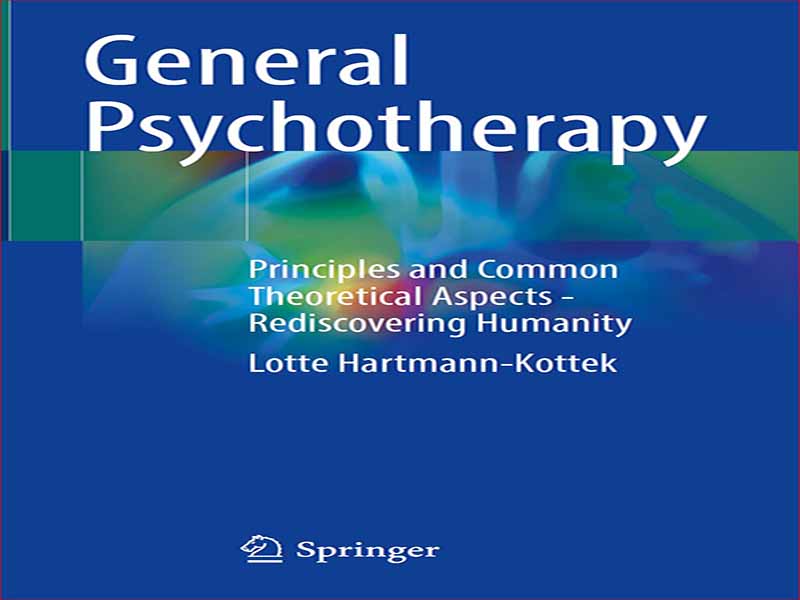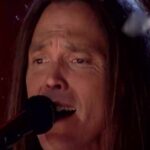- عنوان کتاب: General Psychotherapy
- نویسنده/انتشارات: Lotte Hartmann-Kottek
- حوزه: روان درمانی
- سال انتشار: 2022
- تعداد صفحه: 509
- زبان اصلی: انگلیسی
- نوع فایل: pdf
- حجم فایل: 5.22 مگابایت
حوزه رواندرمانی ما را میتوان با مجموعهای از رویکردها و حقایق جزئی تشبیه کرد که هر کدام از منظر درست چیزی مهم و ارزشمند را به تصویر میکشند. با این حال، موضعگیریها، رویکردها، تمرکزها و روابط نسبتاً نامرتبط هر مکتب فکری، آنها را از تشکیل یک چارچوب کلی و مشترک باز میدارد. این گسستگی در حوزه روانشناسی، در میان چیزهای دیگر، منعکسکننده تحولات دوران ماست، که به موجب آن، تا پیش از این، حتی حوزههای علمی فردی میتوانستند درباره جهانبینی و مفهوم مشترک کافی از انسان به اجماع برسند. این مربوط به ادغام کامل فیزیک کلاسیک و کوانتومی در علم “جریان اصلی” است که هنوز اتفاق نیفتاده است. حامیان اولی این فرض اساسی را دارند که جهان مجموع ذراتی است که میتوان اندازهگیری، وزن کرد، ارزیابی آماری کرد و مشخص کرد. دیگران بر این عقیده هستند که کوچکترین موجودات فیزیکی کوانتومهای پرانرژی هستند که به هم می پیوندند، شبه جسمی تجمع می یابند یا در یک حالت میانی وجود دارند – و می توانند تحت تأثیر آگاهی انسان، از جمله چیزهای دیگر باشند. این یک مفهوم کلیدی از میراث انیشتین است. E = mc2 فرمولی است که در سراسر جهان شناخته شده است. برای بحث در مورد اصل هم ارزی جرم و انرژی نیازی نیست که یک فیزیکدان کوانتومی باشد. چرا این به روان درمانی مربوط می شود؟ همانطور که از یک سو، این مفروضات مبنای اساسی متفاوتی را برای علم رواندرمانی فرض میکنند و از سوی دیگر، با روششناسی علمی متفاوتی مرتبط هستند. گروه اول صرفاً بر بستر واقعی قابل اندازهگیری و مشاهده، به عنوان مثال در فیزیولوژی عصبی، زیستشناسی، جنینشناسی، مشاهدات رفتاری و غیره تمرکز میکنند و از روشهای آماری فیزیک کلاسیک استفاده میکنند. گروه دوم وظیفه درگیر شدن با انرژی ها و اطلاعات ساطع شده و جذب شده در سطوح مختلف در فضای بین فردی و درون روانی را دارند. مشابه کوچکترین عنصر، کوانتومی، موجودات پیچیده تری مانند انسان به عنوان یک موجودیت کامل در ساختار مادی و غیر مادی آنها به طور همزمان درک می شوند. درمان علمی مقدار کوانتومی مرتبط با امواج نیازمند ارجاع به نظریه کوانتومی است. (روش فیزیک کلاسیک و آمار برای این مقدار قابل اجرا نیست.) هم انسان و هم مغز به ویژه محل ملاقاتی برای هر دو حالت وجود و اشکال میانی آنها هستند. ما حالتهای سازنده و کوانتومی را موازی یا شاید بهتر بگوییم در هم تنیده مییابیم. زیرسیستم «آگاهی» به وضوح در حالت کوانتومی وجود دارد، در حالی که به نظر میرسد سیستم مادیشده حالت سازنده، محافظ لازم را فراهم میکند. در سادهترین سطح سازمانی عصبی خود، با ظرفیت پردازش محدود، با استفاده از اصل روشن/خاموش کار میکند. نیاز آشکاری برای تحقیق در مورد دیدگاه مکمل غیر مادی وجود دارد. یافته های به دست آمده احتمالاً در این زمینه بسیار سودمند خواهد بود. مشکل دوگانه ذهن و بدن موضوعی است که در ذهن ما وجود دارد، ساخت بیولوژیکی خودمان که شیوه تفکر ما را از قبل ساختار می دهد. به این ترتیب، مشکل از واقعیت نیست. ما ظاهراً عدم انسجام را طرح می کنیم. با توجه به ساختار ادراک حسی تکه تکه و پردازش شناختی آن در نیمکره غالب مغز طبق اصل «یا-یا»، ما در تلاش هستیم تا تمامیت عنصر اساسی یا هویت پرانرژی ماده و انرژی معادل آن را درک کنیم. زمینه فیلسوفان هزاران سال است که در مورد مسئله ذهن و بدن دوگانه اندیشیده اند. در طول قرنها، طرفداران افلاطون و ارسطو بهعنوان واقعگرا و آرمانگرا به شدت با هم مبارزه کردهاند. دکارت راه را برای نقطه عطف دیگری برای شکاف به ظاهر آشتی ناپذیر بین ماده (res extensa) و روح (res cogitans) هموار کرد. حتی فیلسوفان امروزی مانند دیوید چالمرز (متولد 1966) مشتاق ریاضیات، که با ماتریالیسم تقلیلدهنده در اشکال مختلف آن مخالفت میکند و این موضع جسورانه را اتخاذ میکند که همه چیز روح است، در معرض خطر افتادن در موقعیت یا/یا قطبیکننده قرار دارند. (نظریه ارسطویی فقط «الف» یا «ب» را به رسمیت می شناسد و به صراحت «سوم» را نمی شناسد.) جایگاه ما در این بعد ماده-روح ناحیه تغییر است، «لمبو» «و همچنین» بین انرژی مادی شده و متصل، انرژی شگفت انگیزی. که قادر به دگرگونی است و به طور همزمان پتانسیل «روح/آگاهی» و پتانسیل «ماده» است. از یک سو، این درک از مبنای اساسی ما منجر به سردرگمی طبقهبندی میشود، اما از سوی دیگر، فرصتهایی را به رواندرمانی میدهد که تا به امروز بسیار کم استفاده شده است. اگر نتوانیم درباره جنبههای جهانبینی اتفاق نظر پیدا کنیم، بعید است که بتوانیم درباره مفهوم انسان و رویکردهای رواندرمانی به توافق برسیم. به این ترتیب، تأمل در جنبههای پسزمینه بخش نسبتاً بزرگی از این کتاب را به خود اختصاص میدهد.
Our field of psychotherapy can be compared to a conglomerate or kaleidoscope of many approaches and partial truths, each of which depicts something significant and valuable from the right perspective. However, the different basic stances, approaches, focuses and relatively unconnected relationship of each school of thought prevents them from forming a common, general framework. This fragmentation in the field of psychology mirrors the upheaval of our times, among other things, whereby, prior to now, even individual scientific fields were able to reach a consensus on an adequate shared worldview and concept of man. This pertains to the complete integration of classical and quantum physics into “mainstream” science, which is yet to occur. Supporters of the former hold the basic assumption that the world is the sum of particles that can be measured, weighed, statistically evaluated and pinpointed. Others are of the opinion that the smallest physical entities are energetic quanta that join, pseudo-corpuscularly accumulate or exist in an intermediate state – and which can be influenced by human consciousness, among other things. This is a key notion of Einstein’s legacy. E = mc2 is a formula known the world over. One does not need to be a quantum physicist to discuss the principle of mass-energy equivalence. Why is this relevant to psychotherapy? As, on the one hand, these assumptions presume a different underlying basis to the science of psychotherapy and, on the other hand, they are linked to a different scientific methodology. The first group solely focuses on the materially measurable and observable factual substrate, for instance in neurophysiology, biology, embryology, behavioural observations, etc., and employs statistical methods from classical physics. The second group faces the task of engaging with the energies and information radiated and absorbed at different levels in the interpersonal and intrapsychic interspace. Analogous to the smallest element, the quantum, more complex beings such as humans are understood as a whole entity in their simultaneously material and non-material constitution. The scientific treatment of the quantum amount linked in waves requires reference to quantum theory. (The methodology of classical physics and statistics is not applicable for this amount.) Both humans and brains, in particular, are a meeting place for both modes of being and their intermediate forms. We find constructive and quantum states in parallel, or, perhaps better said, intertwined. The “consciousness” subsystem is clearly present in the quantum state, whilst the materialised system of the constructive state seems to provide necessary shielding; on its simplest neuronal organisational level, it works – with limited processing capacity – using the on/off principle. There remains an evident great need for research on the non-material complementary perspective. The findings obtained would likely be greatly beneficial in this regard. The dual mind-body problem is an issue of the concept in our minds, our own biological construction that pre-structures the way in which we think. As such, it is not a problem of reality. We outwardly project decoherence. Due to the structure of fragmented, sensory perception and the cognitive processing thereof in the dominant brain hemisphere according to the “either-or” principle, we struggle to grasp the entirety of the basic element or the substantially energetic identity of matter and its equivalent energy field. Philosophers have pondered the dualistic mind-body problem for thousands of years. Over the centuries, proponents of Plato and Aristotle have fought fiercely as realists and idealists. Descartes paved the way for another milestone for the seemingly irreconcilable divide between matter (res extensa) and spirit (res cogitans). Even modern-day philosophers such as the mathematics enthusiast David Chalmers (born 1966), who opposes reductive materialism in its many forms and adopted the bold position that everything is spirit, are at risk of falling into a polarising either/or position. (Aristotelian theory only recognises “A or B” and explicitly not “Third”.) Our place in this matter-spirit dimension is the shift zone, the “limbo” the “as well as” between materialised and connected energy, a fascinating energy that is capable of transforming and is simultaneously “spirit/consciousness” potential and “matter” potential. On the one hand, this understanding of our underlying basis leads to categorical confusion, but, on the other hand, it grants opportunities to psychotherapy that have been too little utilised to date. If we are unable to find consensus on the aspects of the worldview, it is unlikely that we will be able to agree on the concept of man and psychotherapeutic approaches. As such, reflecting on the background aspects takes up a comparatively large part of this book.
این کتاب را میتوانید از لینک زیر بصورت رایگان دانلود کنید:
Download: General Psychotherapy




































نظرات کاربران